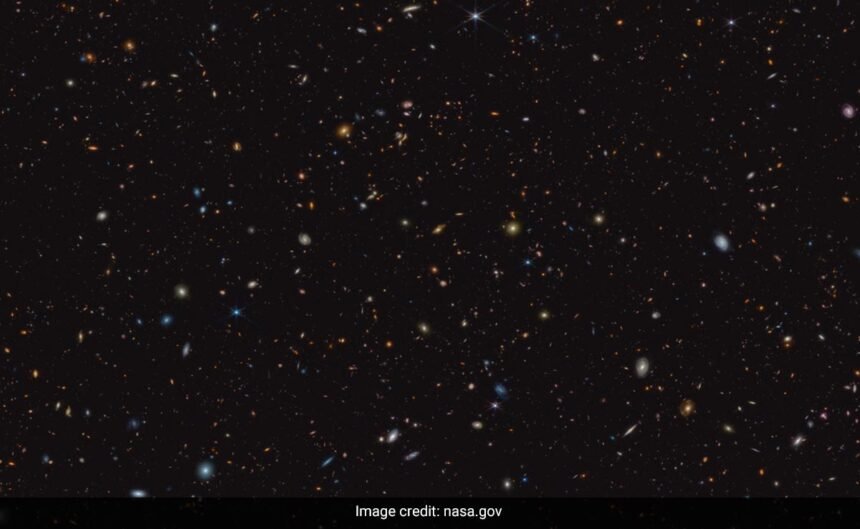NASA’s James Webb Space Telescope has unveiled a breathtaking image showcasing more than 45,000 galaxies in a portion of the sky known as GOODS-South. This remarkable picture was captured as part of the JWST Advanced Deep Extragalactic Survey (JADES) program, which aims to uncover and characterize faint, distant galaxies. Despite the ongoing data collection, JADES has already made exciting discoveries, identifying hundreds of galaxies that existed when the universe was less than 600 million years old. Among them are galaxies teeming with young and hot stars.
The JADES program, which allocates approximately 32 days of telescope time, seeks to answer crucial questions about the assembly and star formation processes of the earliest galaxies. Marcia Rieke of the University of Arizona, co-lead of the JADES program, expressed the team’s objectives, including understanding the rapidity of star formation and the factors that influence the cessation of star formation in certain galaxies.
Ryan Endsley of the University of Texas at Austin spearheaded an investigation into galaxies that emerged 500 to 850 million years after the big bang. During this period, the universe was enshrouded in a gaseous fog, rendering it opaque to energetic light. However, as the fog cleared by approximately one billion years after the big bang (known as reionization), the universe became transparent. Scientists have debated whether active supermassive black holes or galaxies filled with young, hot stars played a primary role in this reionization process.
The research team found evidence suggesting that young galaxies experienced alternating periods of intense star formation and quiescent periods with fewer stars being formed. These fluctuations may have occurred as galaxies captured clusters of gaseous raw materials required for star formation. Another possibility is that the explosive demise of massive stars injected energy into the surrounding environment, periodically preventing gas condensation and the formation of new stars.
In addition to investigating the evolution of galaxies in the early universe, the JADES program focuses on identifying the earliest galaxies that existed when the universe was less than 400 million years old. By studying these ancient galaxies, astronomers can gain insights into how star formation during the early years after the big bang differed from present-day observations.
The JADES team, led by Kevin Hainline of the University of Arizona, utilized the Webb telescope’s Near-Infrared Camera (NIRCam) instrument to analyze the photometric redshifts of candidate galaxies. Over 700 galaxies were identified, dating back to a time when the universe was between 370 million and 650 million years old. These observations have revealed extended objects with visible structures, allowing scientists to witness the birth of star groupings mere hundreds of millions of years after the dawn of time.
The findings from the JADES program were presented at the 242nd meeting of the American Astronomical Society in Albuquerque, New Mexico, highlighting the complex nature of early-universe star formation.






